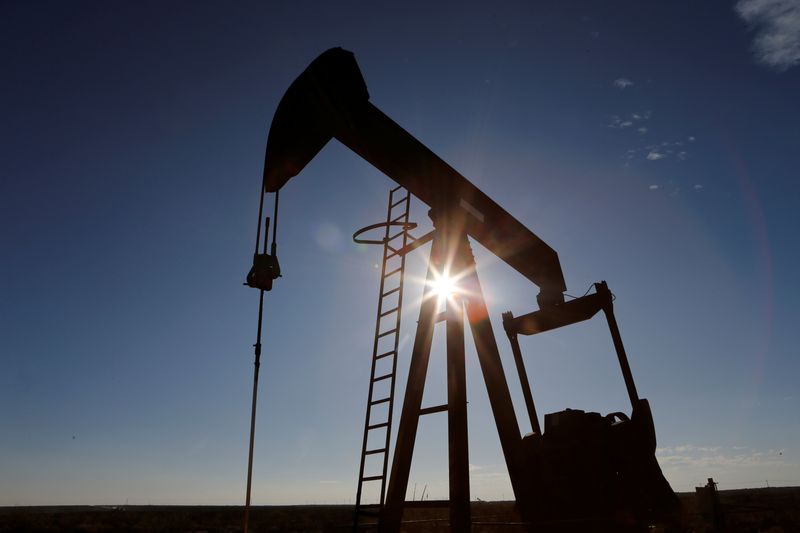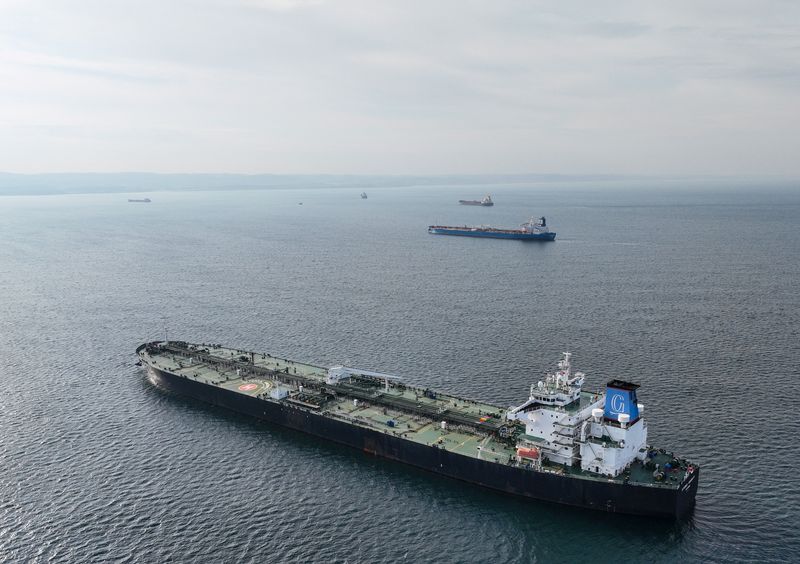
By Georgina McCartney
HOUSTON (Reuters) -Global oil benchmark Brent crude futures fell below $70 a barrel on Tuesday for the first time since December 2021, after OPEC+ revised down its demand forecast for this year and 2025.
Brent crude futures were down $2.62, or 3.65%, at $69.22 a barrel at 1:14 p.m. EDT (1715 GMT). U.S. West Texas Intermediate (WTI) crude lost $2.90, or 4.22%, to $65.81.
Both benchmarks dropped by more than $3 during the session, after each rose by about 1% on Monday. WTI crude futures fell more than 5% on Tuesday, hitting their lowest levels since May 2023.
On Tuesday, the Organization of the Petroleum Exporting Countries (OPEC) in a monthly report said world oil demand would rise by 2.03 million barrels per day (bpd) in 2024, down from last month’s forecast for growth of 2.11 million bpd.
Until last month, OPEC had kept the forecast unchanged since it was first made in July 2023.
OPEC also cut its 2025 global demand growth estimate to 1.74 million bpd from 1.78 million bpd. Prices slid on the weakening global demand prospects and expectations of oil oversupply.
On Monday, Chinese data showed consumer inflation accelerated in August to its fastest in half a year, though domestic demand remained fragile, and producer price deflation worsened.
Asian refiners’ margins fell to their lowest seasonal level since 2020 last week on rising supplies of diesel and gasoline.
“There’s almost no oil demand growth in the advanced economies this year. Fiscal stimulus in China has not boosted the construction sector; that’s one big reason Chinese demand for diesel is shrinking,” said Clay Seigle, an oil market strategist.
While data released on Tuesday showed China’s exports grew in August at their fastest in nearly 1-1/2 years, imports disappointed with domestic demand depressed.
Investors are increasingly pricing in a slowing global economy, according to Phil Flynn, a senior analyst at Price Futures Group.
INCOMING STORM
Meanwhile, Tropical Storm Francine barrelled across the Gulf of Mexico, on track to become a hurricane on Tuesday, the U.S. National Hurricane Center said.
The storm could be a test for new liquefied natural gas(LNG) export plants on the U.S. Gulf Coast, with Sempra’s Cameron LNG, Venture Global LNG’s Calcasieu Pass LNG and Tellurian (NYSE:TELL)’s Driftwood LNG development in the path of the storm.
Exxon Mobil (NYSE:XOM), Shell (LON:SHEL) and Chevron (NYSE:CVX) removed on Monday offshore staff and halted some Gulf of Mexico oil and gas operations.
But production shut-ins have failed to offset weak demand sentiment, analysts said.

Meanwhile, U.S. crude oil and distillate stockpiles were expected to have risen last week, while gasoline inventories likely fell, an extended Reuters poll showed on Tuesday.
The poll was conducted ahead of a report from the American Petroleum Institute industry group at 4:30 p.m. EDT (2030 GMT) on Tuesday and one from the Energy Information Administration, the statistical arm of the U.S. Department of Energy, at 10:30 a.m. EDT (1430 GMT) on Wednesday.
This post is originally published on INVESTING.





